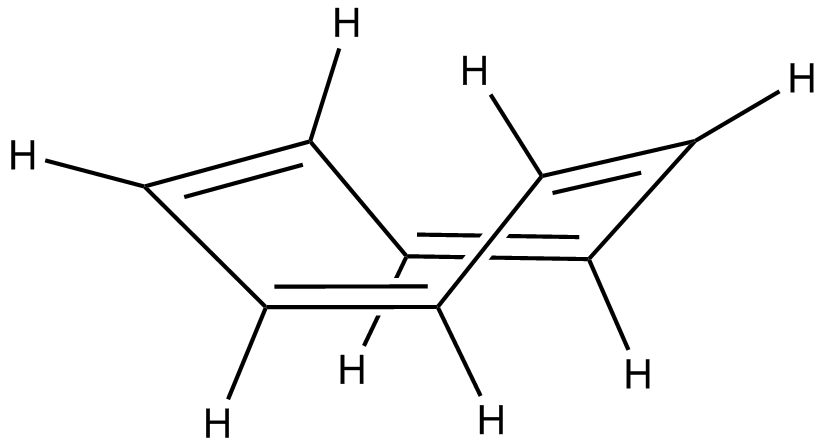Conjugated system

A chemically conjugated system is a system of atoms covalently bonded with alternating single and multiple (e.g. double) bonds (e.g., C=C-C=C-C) in a molecule of an organic compound. This system results in a general delocalization of the electrons across all of the adjacent parallel aligned p-orbitals of the atoms, which increases stability and thereby lowers the overall energy of the molecule.
The electron delocalisation creates a region where electrons do not belong to a single bond or atom, but rather a group. An example would be phenol (C6H5OH, benzene with hydroxyl group) (diagramatically has alternating single and double bonds), which has a system of 6 electrons above and below the flat planar ring, as well as around the hydroxyl group.

Conjugation is possible by other means other than the presence of alternating single and double bonds. As long as each contiguous atom in a chain possesses a pi orbital, the system can be considered conjugated. For example, furan (shown at right) is a five-membered ring with two alternating double bonds and in position 1 is an oxygen. Oxygen has two lone pairs, one of which occupies the a pi orbital on that position, therefore maintaining the conjugation of that five-membered ring. The presence of a nitrogen in the ring or groups α to the ring like a carbonyl group (C=O), an imine group (C=N), a vinyl group (C=C), or an anion will also suffice as a source of pi orbitals to maintain conjugation.
Conjugated systems have unique properties that give rise to strong colors. Many pigments make use of conjugated electron systems, such as beta carotene's long conjugated hydrocarbon chain resulting in a strong orange color. When an electron in the system absorbs a photon of light of the right wavelength, it can be promoted to higher energy level. (See particle in a box). Most of these electronic transitions are of a pi-orbital electron to a pi-antibonding orbital (π to π*), but nonbonding electrons can also be promoted (n to π*). Conjugated systems of less than eight conjugated double bonds absorb only in the ultraviolet region and are colorless to the human eye. With every double bond added, the system absorbs photons of longer wavelength (and lower energy), and the compound ranges from yellow to red in color. Compounds that are blue or green typically do not rely on conjugated double bonds alone.
This absorption of light in the ultraviolet to visible spectrum can be quantified using UV/VIS spectroscopy. This absorption of light forms the basis for the entire field of photochemistry.

Conjugated systems form the basis of chromophores, which are light-absorbing parts of a molecule which can cause a compound to be colored. Such chromophores are often present in various organic compounds and sometimes present in polymers, which are colored or glow in the dark. They are usually caused by conjugated ring systems with bonds such as C=O and N=N in addition to conjugated C-C bonds.

Conjugation in cyclic structures results in aromaticity, an unusual stability found in cyclic conjugated systems.
It is important to note that merely possessing alternating double and single bonds is not enough for a system to be strongly conjugated. Some cyclic hydrocarbons (such as cyclooctatetraene) do indeed possess alternating single and double bonds. Although the molecule may appear planar looking only at its chemical structure, the molecule is not actually, and typically adopts a "tub" conformation. Because the p-orbitals of the molecule do not align themselves well in this non-planar molecule, the electrons are not as easily shared between the carbon atoms. They can be still considered conjugated, but they are not considered aromatic. Cyclooctatetraene would not be considered aromatic due to the fact that it is not planar.